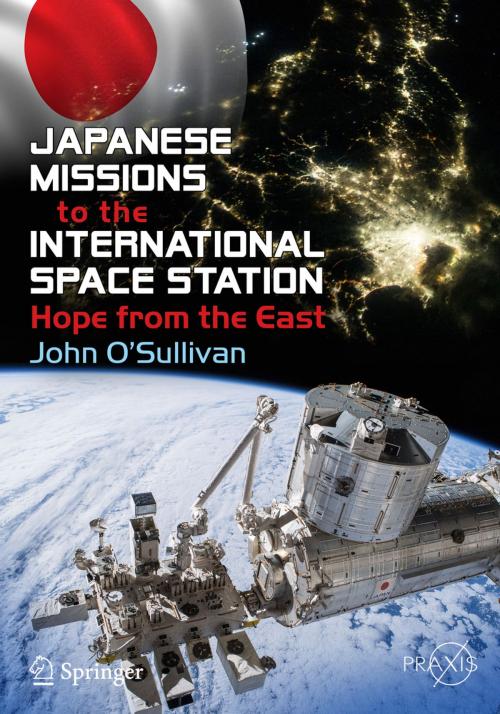Japanese Missions to the International Space Station
Hope from the East
Nonfiction, Science & Nature, Technology, Aeronautics & Astronautics, Science| Author: | John O'Sullivan | ISBN: | 9783030045340 |
| Publisher: | Springer International Publishing | Publication: | March 23, 2019 |
| Imprint: | Springer | Language: | English |
| Author: | John O'Sullivan |
| ISBN: | 9783030045340 |
| Publisher: | Springer International Publishing |
| Publication: | March 23, 2019 |
| Imprint: | Springer |
| Language: | English |
Japan has a rich history of human spaceflight, flying in space with both NASA and the Soviet/Russian space agencies over the years. This book tells the story of the JAXA astronauts who have visited the International Space Station and how they have lived on board, helped construct the space laboratory and performed valuable scientific experiments.
JAXA has contributed the largest single module to the ISS: the Kibō (Hope) science laboratory with its Logistics Module, Exposed Facility and robot arm. JAXA supplies the station with cargo and supplies on its automated cargo spacecraft, the H-II Transfer Vehicle (HTV), but it is the human endeavour that captures the imagination. From brief visits to six-month expeditions, from spacewalking to commanding the Earth’s only outpost in space, JAXA astronauts have played a vital role in the international project.
Extensive use of colour photographs from NASA and JAXA depicting the experiments carried out and the phases of the ISS construction, together with the personal stories of the astronauts’ experiences in space, highlight the crucial part the Japanese have played in human spaceflight.
Japan has a rich history of human spaceflight, flying in space with both NASA and the Soviet/Russian space agencies over the years. This book tells the story of the JAXA astronauts who have visited the International Space Station and how they have lived on board, helped construct the space laboratory and performed valuable scientific experiments.
JAXA has contributed the largest single module to the ISS: the Kibō (Hope) science laboratory with its Logistics Module, Exposed Facility and robot arm. JAXA supplies the station with cargo and supplies on its automated cargo spacecraft, the H-II Transfer Vehicle (HTV), but it is the human endeavour that captures the imagination. From brief visits to six-month expeditions, from spacewalking to commanding the Earth’s only outpost in space, JAXA astronauts have played a vital role in the international project.
Extensive use of colour photographs from NASA and JAXA depicting the experiments carried out and the phases of the ISS construction, together with the personal stories of the astronauts’ experiences in space, highlight the crucial part the Japanese have played in human spaceflight.















